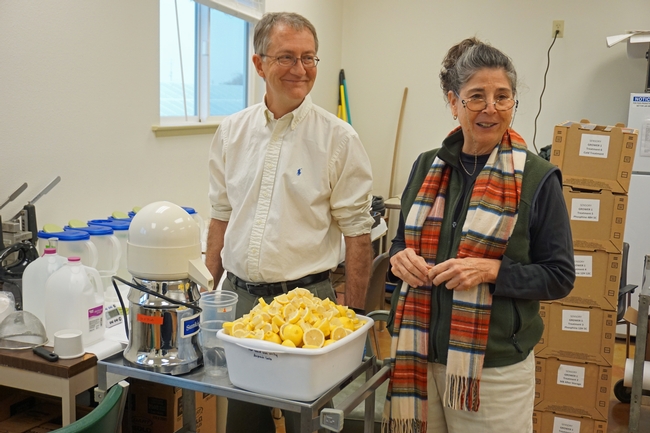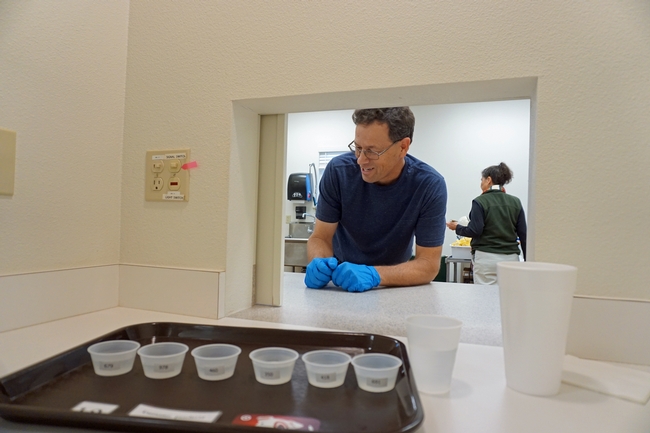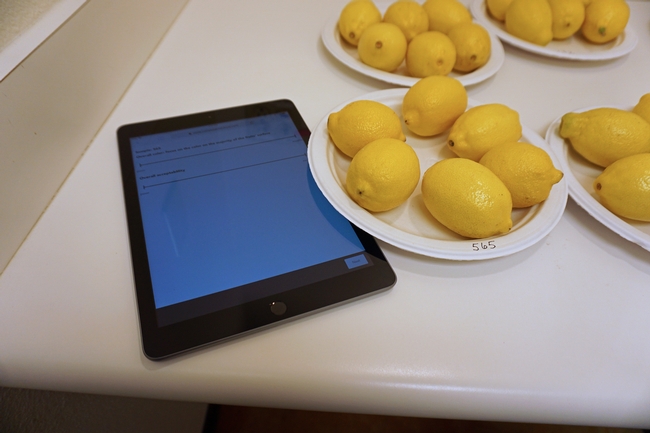Lemon water tasting at UC research center kicks off an 18-month citrus sensory study
What flavors do you detect in a sip of lemon water? Are there notes of sweetness, sour, off flavors or fresh citrus taste? Scientists at the UC Kearney Agricultural Research and Extension Center and the USDA want to know every subtle taste sensation for a research project continuing over the next 18 months.
Participants will taste the major types of citrus to confirm that treatments used to eliminate pests in overseas shipments don't have an impact on fruit enjoyment. Lemon tasting will be followed by mandarins, navel and Valencia oranges, and grapefruit.
“This work is critical for the citrus industry,” said Mary Lu Arpaia, UC Cooperative Extension specialist in subtropical fruit. “A huge amount of California citrus is exported, but if there are quarantined pests in the shipment, that triggers treatments with a fumigant.”
In the past, importers treated citrus with methyl bromide. However, the pesticide has been phased out because it depletes the ozone layer. An alternative fumigant, phosphine, kills the insects, but scientists don't yet know what impact the chemical will have on the fruit.
“We're hoping there's no taste difference,” Arpaia said. “But we don't know. That's why we're doing the testing.”
USDA plant physiologist David Obenland, based at the USDA office across the street from Kearney in Parlier, is working with Arpaia to conduct the study at Kearney's sensory laboratory. The 1,100-square-foot laboratory features neutral white paint and broad-spectrum lighting; the ventilation system minimizes distracting odors. Six tasting booths each have small windows that open to the kitchen area, where samples are prepared.
“Previous research has resolved residue issues and determined phosphine is effective in killing the pests,” Obenland said. “But they didn't fully determine whether the process would hurt the fruit.”
The current project compares fruit treated with methyl bromide, phosphine and a cold temperature protocol in which the fruit is held just above freezing for three weeks. In addition to tasting the fruit, volunteers evaluate the fruit's appearance.
“People buy with their eyes,” Arpaia said. “We're asking our participants to compare the fruit visually to see if they detect any differences.”
The research is funded by the California Citrus Quality Council through a grant from the USDA Foreign Agricultural Service.




